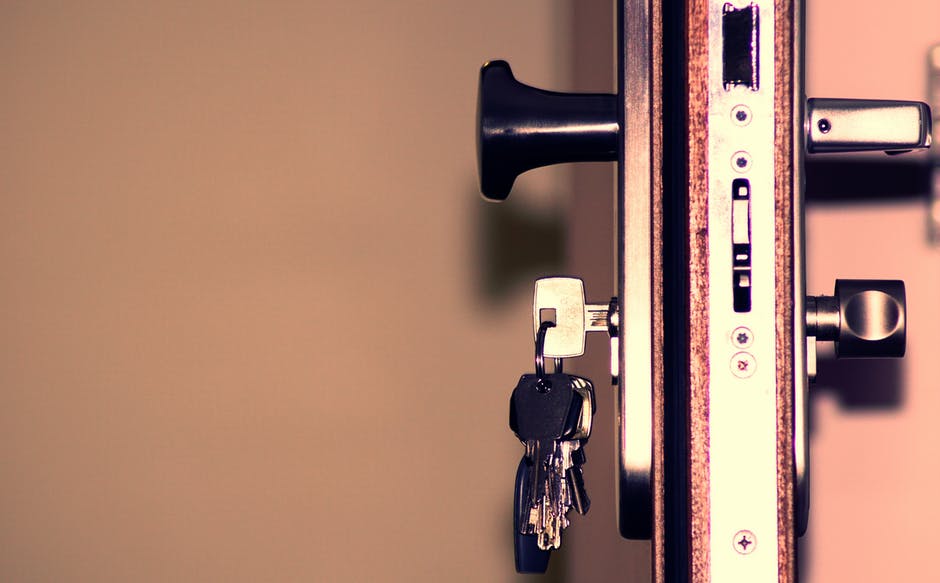Picture this: after a long day at work, you’re coming home and get your key ready to unlock your door. However, a resounding snap from inside of the lock indicates that your day is about to get much worse. Removing a piece of a broken key from a lock is difficult work and can be time-consuming.
What are some easy tips for how to remove a broken key from the inside of a lock?
If you are unfortunate to find yourself in this situation, don’t worry. Here are a few do’s and don’ts when it comes to removing the broken key.
Don’t: Jam the Rest of the Key Inside
You may be tempted to push the rest of the broken key into the slot, especially if you haven’t already realized that the key is broken. However, this can cause serious issues for you. By shoving the rest of the key into the lock, you have forced the broken part of the key deeper inside the lock, making it more difficult to remove.
As soon as you realize that your key has broken, remove the key slowly from the lock. If you’re lucky, the key may still have a chance of coming out whole.
Do: Take the Lock Apart
Your best bet to get the entirety of the broken key out of your lock is to take the lock apart. This will expose the cylinder inside of the lock which has a hole that exposes the broken key. Using something thin, you can push the broken key out of the front of the lock.
Doing this will involve some technical knowledge of locks, so be wary. You’ll first need to remove the entire lock from the door, then search the back of the lock cylinder (where you put the key in) for a small hole. It may be covered by a nut, but that can easily be removed to expose the hole.
A locksmith can be called to do this if you aren’t comfortable doing the job yourself. Simply remove the lock and take it in to your local locksmith so that they can remove the broken key.
Do: Use a Key Extractor
Taking a lock apart can take time, and if you aren’t confident with your locksmithing abilities, you may end up ruining your lock. A key extractor is a great way to remove the broken key without needing to take your lock apart.
Key extractors are specialized tools used by locksmiths designed specifically to remove keys from locks. They are long, thin pieces of metal lined with grooves that can latch onto the broken key and pull it free from the lock.
While using a key extractor, it’s important to use caution so that you don’t accidentally push the key further into the lock. If you do, it may take longer to remove.
Don’t: Use Superglue to Remove the Key
There has been a hack floating around the Internet claiming that you can use superglue to remove broken keys from locks. The idea is that by placing a small amount of superglue on the broken part of the key, you can insert it, wait for the glue to dry, and remove the entire key. However, this will likely only result in you accidentally gluing the rest of the key to the inside of the lock and destroying the inside of the lock.
Whenever you try to remove a key from a lock, make sure to use the proper tools to get it out. Otherwise, you may end up with bigger problems to deal with.
Do: Use Needlenose Pliers
If your key broke but a part of it is still sticking out of the lock, then you can try using needlenose pliers to remove it. You can use them to carefully grip either side of the key and remove it.
If you don’t have needlenose pliers on hand, then a pair of tweezers can be equally effective, especially since they’re thinner than pliers. They may also work if the key is only slightly inside of the lock. However, use caution as to not push the key further into the lock.
Do: Use a Paperclip to Remove the Broken Key
There is a chance that you won’t have any good locksmithing tools available to remove the key with. However, a paperclip can be used in a similar fashion to remove the key.
This usually works best if the paperclip you are using has grooved edges or any way to hook onto the key. Just shimmy the paperclip into the lock and try to get to one side of the key, then pull it out.
How to Prevent Your Key from Breaking
Once you are able to remove the key from the lock, there are some steps you should take to make sure this mistake doesn’t happen again. To protect your lock, you can use proper maintenance in order to prevent it from forming grooves that can latch onto the key; this can come in the form of lubricant or regular cleaning.
Once you notice that one of your keys has suffered significant wear and tear, it may be time to get a replacement. Make sure you regularly replace your keys so that they don’t get a chance to break off in your lock!
Knowing How to Remove a Broken Key When Disaster Strikes
Now that you know how to remove a broken key from a lock, you won’t have to be unprepared if disaster strikes. Make sure to keep a few extra tools in your toolbox so that you can be ready at any time!
Are you struggling to remove your broken key from a lock or have similar locksmithing issues?
We’re here to help. Contact us with any questions or concerns you may have, and continue reading our blog for more tips and tricks.


